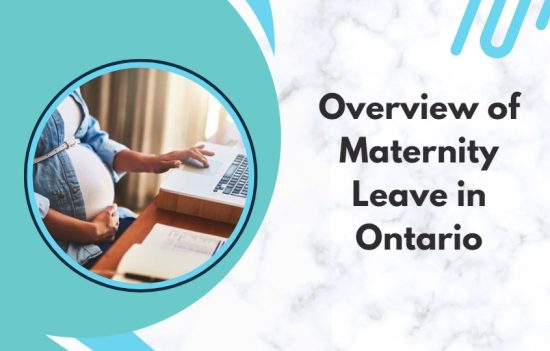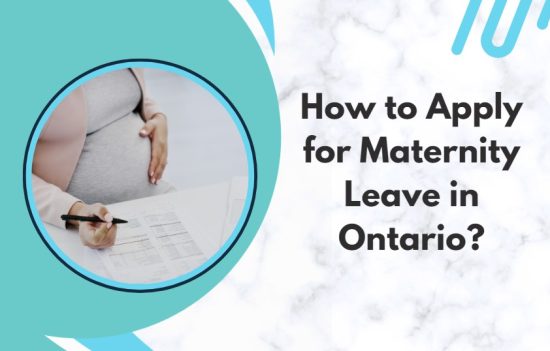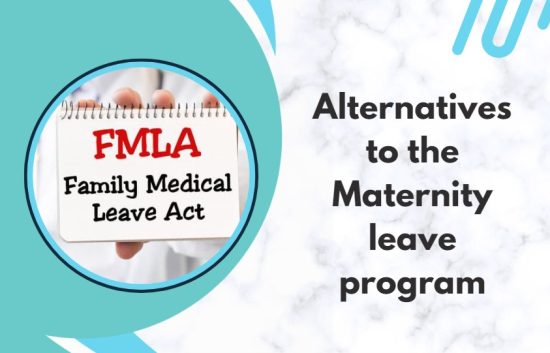Introduction
As an expectant mother in Ontario, one of the most important things you need to consider is your maternity leave. Taking time off work to care for your newborn is not only beneficial for you and your family but also a legal right under the Employment Standards Act in Ontario. However, with so much information available, it can be overwhelming trying to figure out how long maternity leave lasts and what benefits are available. In this blog post, we give you an overview of everything you need to know about maternity leave in Ontario, from eligibility requirements to entitlements and benefits during your time off work. So sit back, relax and read on!
Overview of Maternity Leave in Ontario

Maternity leave in Ontario is a program that provides eligible employees with job-protected time off work after the birth or adoption of a child. This program is designed to support new parents and allow them to bond with their newborns or newly adopted children without fear of losing their jobs.
Under the Employment Standards Act (ESA), new mothers are entitled to up to 12 months of unpaid maternity leave, while new fathers and adoptive parents can take up to 63 weeks off work. In some cases, both parents may be eligible for leave at the same time.
During this time, employees are entitled to maintain their benefits coverage and seniority status. They also have the right to return to their position within the company once their leave has ended.
It’s important for expectant parents in Ontario who plan on taking maternity leave to familiarize themselves with all of the details surrounding eligibility requirements, entitlements, and how they can apply for this program. By doing so, they will be able to make informed decisions throughout their entire parental journey.
What Types of Maternity Leave are Available in Ontario?
In Ontario, three types of maternity leave are available to expecting mothers: pregnancy leave, parental leave and adoption leave. Each type of leave has its eligibility requirements and maximum length.
- Pregnancy Leave is a type of maternity leave for women who are pregnant and unable to work due to the effects of their pregnancy or childbirth. This type of leave can start up to 17 weeks before your due date and lasts up to a maximum of 15 weeks.
- Parental Leave is available for both parents after the birth or adoption of a child under the age of 18. The total amount of parental leave available is up to 12 months but must be shared between both parents in any way they choose.
- Adoption Leave allows adoptive parents up to a maximum period off work without pay when adopting a child under the age of 18. The duration depends on various factors including if one or two parent(s) will be taking time off work if it’s an international or local adoption etc.
Knowing what types of maternity leaves you’re eligible for as an expectant mother will help you plan accordingly so that you can make the most out of this special moment in your life while ensuring job security upon your return after your absence from work.
What are the Eligibility Requirements for Maternity Leave in Ontario?

- To be eligible for maternity leave in Ontario, you must have worked for your employer for at least 13 consecutive weeks in your qualifying period, you must have completed a minimum of 600 hours of insurable employment before the start of your leave. For both full-time and part-time employees, these employment requirement applies.
- Furthermore, you must also be a pregnant employee or have recently given birth to a child. The eligibility criteria also extend to adoptive parents who are planning on adopting a child or those who are taking legal custody of their children.
- It’s important to note that if you’re an independent contractor or self-employed, you aren’t entitled to maternity leave benefits under the Employment Standards Act (ESA). However, some other government programs might provide financial assistance during this time.
- Additionally, eligible employees must give their employers written notice of their intention to take maternity leave at least two weeks before the date they wish their leave period to begin. The notice should include relevant details such as starting and ending dates of the proposed leaves.
- The eligibility requirements ensure that only qualified individuals receive benefits from Ontario’s maternity program while preventing any abuse by fraudulent applicants.
Entitlements and Benefits During Maternity Leave
Entitlements and benefits during maternity leave in Ontario are designed to provide support for new mothers who need time off from work after giving birth. Under the Employment Standards Act, eligible women can take up to 18 months of unpaid leave. During this time, they still have access to certain workplace entitlements and benefits.
One such benefit is continued participation in employer-sponsored health plans. As long as premiums are paid, women on maternity leave can keep their coverage for things like prescription drugs and dental care.
In addition, employees may continue making contributions to an employee pension plan while on leave. This ensures that retirement savings remain intact despite the temporary absence from work.
Employment insurance (EI) benefits are also available during maternity leave. These include both standard and extended parental benefits, which provide a source of income replacement while away from work with a new child.
These entitlements and benefits allow new mothers in Ontario to focus on caring for their newborns without worrying about financial loss or gaps in healthcare coverage.
How Long is Maternity Leave in Ontario?
Maternity leave in Ontario is a benefit granted to new mothers, providing them with time off from work after giving birth or adopting a child. The length of maternity leave in Ontario depends on the type of leave that you choose and your eligibility requirements.
For example, standard maternity leave provides up to 12 months of job-protected leave while extended maternity leave provides up to 18 months. However, it’s important to note that extended maternity benefits provide a lower percentage of income than standard benefits.
To be eligible for maternity benefits, employees must have worked at least 600 hours in the previous year before their expected due date or adoption placement date. They also need a medical certificate confirming pregnancy and an ROE (record of employment) from their employer.
Once approved for maternity benefits, new mothers will receive Employment Insurance (EI) payments for up to 17 weeks along with the option to take additional parental leave which extends benefits beyond the initial period.
The length of Maternity Leave in Ontario varies depending on individual circumstances but typically ranges between 12-18 months including both EI payments and job protection.
How to Apply for Maternity Leave in Ontario

In Ontario, applying for maternity leave is a simple process. To begin with, you need to inform your employer about your intention to take a leave of absence due to pregnancy or the birth of your child.
- Once you’ve informed your employer, you must get in touch with Service Canada as soon as possible. You can apply online via their website or by phone by calling 1-800-O-CANADA (1-800-622-6232). It’s advisable to start this process early so that any necessary paperwork and arrangements can be made well ahead of time.
- When applying, make sure that you have all the required documentation on hand, including information about your employment status and income details. This may include pay stubs, tax documents, and proof of insurance coverage.
- Additionally, it’s worth considering whether you want to take advantage of other benefits available during maternity leave such as parental leave or sick leave if applicable. Be sure to discuss these options with Service Canada when submitting your application.
- Ultimately, applying for maternity leave in Ontario requires proper planning and organization. Staying informed about eligibility requirements and entitlements beforehand and following the correct procedures when applying for benefits will help ensure a smooth transition into this new stage in life.
Tips for Making the Most of Your Maternity Leave
Maternity leave is a special time for new mothers to bond with their newborns and adjust to life as a parent. Although it can be tempting to spend all your time snuggling your little one, there are ways to make the most out of your maternity leave.
- Firstly, try to establish a routine that works for you and your baby. This will help create some predictability in your day-to-day life and make sure you’re making the most of each moment together. Additionally, consider taking up a new hobby or pursuing an activity that brings you joy – this could be anything from knitting to cooking or even learning a new language.
- It’s also important not to lose touch with friends and family during this time. Social connections can provide emotional support when things get tough, so make sure you stay connected through regular phone calls or virtual hangouts.
- Don’t put too much pressure on yourself! Maternity leave is meant to be a break from work stress so take advantage of this opportunity by focusing on self-care activities like yoga, meditation or even just taking long walks outside with your baby.
By following these tips, you’ll be able to maximize the benefits of maternity leave while still enjoying precious moments with your little one.
Alternatives to the Maternity leave program

While maternity leave is a great option for many new parents, it may not be the best fit for everyone. Fortunately, several alternatives can provide flexibility and support during this important time.
- One alternative to traditional maternity leave is to negotiate a flexible work schedule or telecommuting arrangement with your employer. This can allow you to continue working while also being able to care for your child at home.
- Another option is to consider taking unpaid leave under the Family Medical Leave Act (FMLA). While this does not come with any benefits or job protection, it can give you more time off than what is offered through standard maternity leave policies.
- If you’re self-employed, another alternative could be adjusting your workload or hiring additional help during this time. This can allow you to take time off without completely stopping work and losing income.
- Ultimately, the best choice will depend on your circumstances and needs. It’s important to explore all available options and make an informed decision based on what works best for you and your family.
Conclusion
New moms in Ontario need to understand their maternity leave options. This can be an overwhelming process, but by understanding the requirements for eligibility and entitlements, as well as taking advantage of other programs like parental benefits and job-protected leaves, you’re able to make informed decisions about your maternity leave period. Taking a period off work can be daunting, but it ultimately offers a rewarding experience that allows you to bond with your newborn baby and return to the workplace refreshed and ready for any challenges ahead.
FAQs on how long is maternity leave ontario
1. How long is paid maternity leave in Canada?
In Canada, parents are entitled to up to 50 weeks of paid parental or pregnancy leave. Parents can share these advantages. In Ontario, parents are entitled to a 17-week parental vacation from work.
2. Does Canada give 1 year of paid maternity leave?
Yes, throughout a 52-week benefit period, you are eligible for up to 50 weeks of benefits. However, the maximum number of weeks for which benefits may be awarded may grow to 102 weeks when maternity or parental benefits are combined with other kinds of special benefits.
3. Can I apply for EI after my maternity leave?
Many Canadians might be shocked to hear that they might not be eligible for employment insurance after taking maternity leave; this practice is being criticized as unfair. People who claim EI in Canada are currently assessed according to a specific number of hours worked over the previous 52 weeks of employment.
4. How do I extend my maternity leave in Canada?
Once you’ve decided, you can notify your manager if you want to return from your leave early or extend it (as long as the overall length doesn’t exceed 78 weeks).










